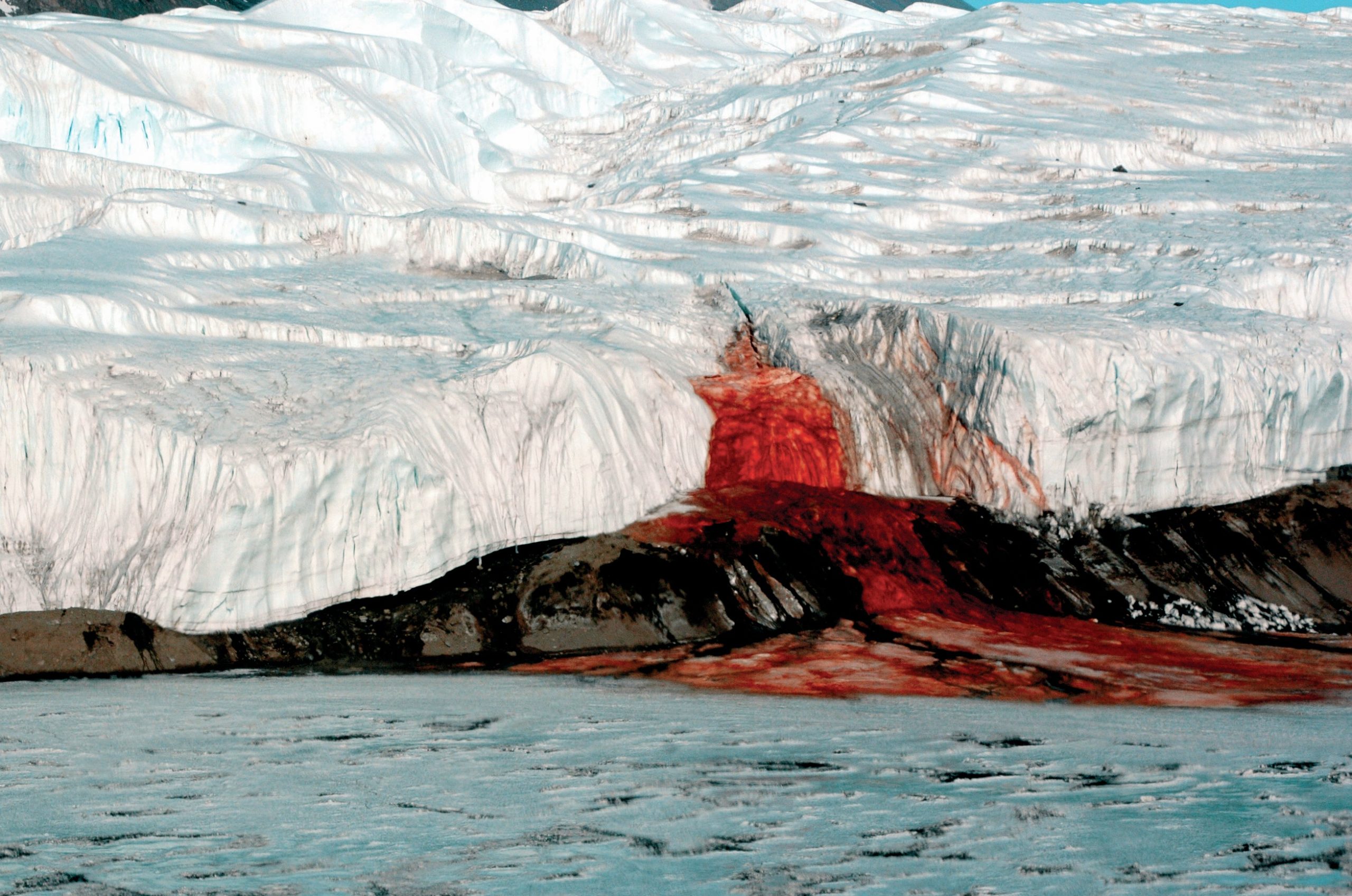
Blood Falls emerges at the snout of Taylor Glacier, then flows into Lake Bonney in the McMurdo Dry Valleys region of Antarctica. It forms a dramatic spectacle in one of the coldest, driest and inhospitable regions on Earth. The falls were discovered in 1911 by a geographer, Thomas Griffith Taylor (1880 –1963), who was the expedition geologist and meteorologist on Captain Robert Scott’s Terra Nova Expedition (1910 –13). This expedition carried out a great deal of scientific work in the region, but included the tragic South Polar journey in which all five members including Scott died.
Subglacial liquid water is widespread in many parts of Antarctica, but little is known about the groundwaters in the McMurdo Dry Valleys where highly saline marine waters may be trapped at depth. The pressure from the weight of Taylor Glacier forces out hypersaline, ferrous waters which oxidise to a deep red colour as they cascade down the snout and across the glacier foreland.
Your organisation does not have access to this article.
Sign up today to give your students the edge they need to achieve their best grades with subject expertise
Subscribe




